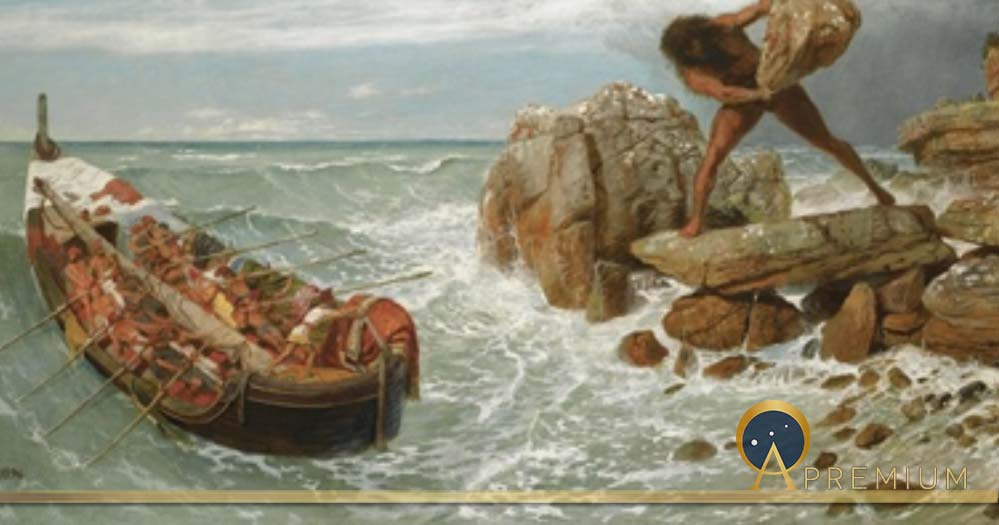Odysseus, Off Course in the Baltic Sea
Homer’s Odyssey tells of the adventures of the ancient seasoned mariner, Odysseus, hero of the Trojan War, who offended Poseidon and as a result was cursed to sail the seas and prolong his journey home to the isle of Ithaca and his queen Penelope, with 10 years. Although it is generally assumed that Odysseus and his band of brothers, zig-zagged the Mediterranean Sea on their ill-fated voyage, ancient and modern scholars are divided on the exact modern locations of Odysseus’ ports of call. Steering completely off course however, some authors propose that Odysseus could have lost his way in the Baltic Sea.

Head of Odysseus from a sculptural group representing Odysseus blinding Polyphemus. From the villa of Tiberius at Sperlonga. Museo Archeologico Nazionale in Sperlonga (Public Domain)
"The man rich in cunning tells me, O Muse, that for a long time
he made a mistake after he had destroyed the sacred fortress of Troy;
Of many men the cities saw and knew the mind,
many pains suffered in the heart on the sea,
"fighting for his life and for the return of his..." (Homer: Odyssey)
Did the astute Odysseus sail not so much between the islands of the Aegean and across the Mediterranean Sea to the Pillars of Hercules, but rather navigated the Baltic Sea, north of Europe, between fjords and mists?

Odysseus removing his men from the company of the lotus-eaters. Unknown engraving (Public Domain)
Odysseus’ Regular Itinerary
Odysseus is the Homeric hero elected, symbolizing mankind's irrepressible adventurous desire to gain knowledge, to cross every barrier, every obstacle between Man and Knowledge. The accepted traditional version of the Odyssey is after the taking of Troy, Odysseus and his men first called on the Land of Cicones (Thrace) to stock up on provisions for their journey home, but his men looted the city and angered the gods, who blew him off course to the land of the Lotus Eaters (identified by Herodotus as possibly Libya or by historian Polybius as the island Djerba, off Tunisia); from where he sailed to the island of the Cyclopses (Sicily). He escaped the one-eyed Polythemis by disguising his men as sheep and landed on the island Aeolia, home of the wind god (Aeolian isles, north coast of Sicily).

Aeolus and Odysseus Tapisserie de basse lisse, Aubusson vers 1650, d'après Isaac Moillon (Cité tapisserie / CC BY-SA 3.0)
Favored by the gods, Odysseus sails within sight of Ithaca but his men opened the forbidden windbag and he is blown to Telepylos (Mount Etna, Sicily).
Like this Preview and want to read on? You can! JOIN US THERE ( with easy, instant access ) and see what you’re missing!! All Premium articles are available in full, with immediate access.
For the price of a cup of coffee, you get this and all the other great benefits at Ancient Origins Premium. And - each time you support AO Premium, you support independent thought and writing.
Dr Roberto Volterri is the author of 40 books including Archeologia dell Introvabile / Archaeology of the Unobtainable (Italian).
Top Image: Odysseus and Polyphemus (1896) by Arnold Böcklin: Odysseus and his crew escape the cyclops Polyphemus. (Public Domain)


















